Driving traffic to a website is a real challenge: SEO and content marketing rarely generate results overnight, whilst social media marketing can be pegged back by constant algorithmic changes. This can lead some marketers to prioritize paid web traffic (PPC) if they are launching campaigns and seeking quick results.
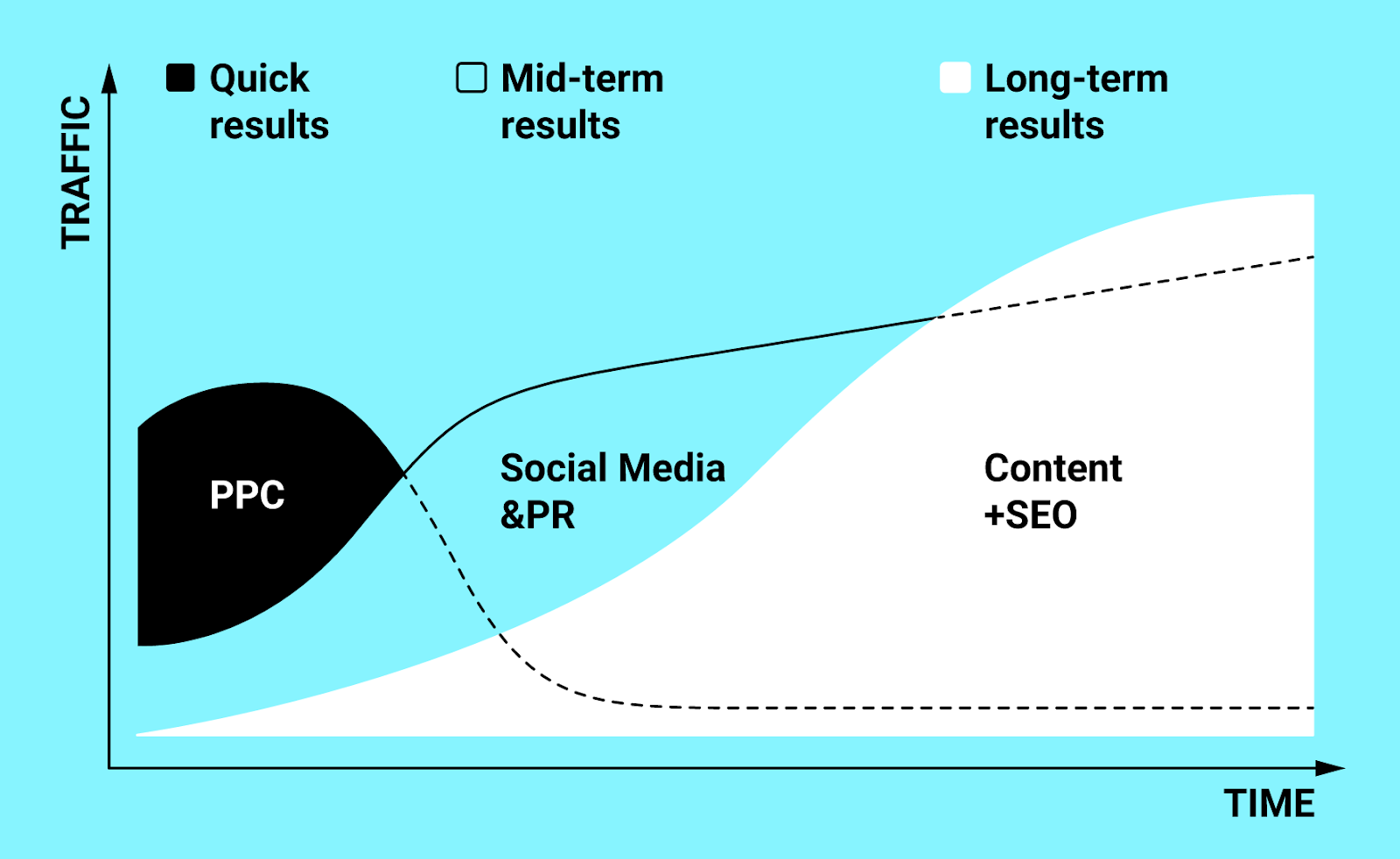
However, paid traffic generation certainly doesn’t guarantee quick results, as you’ll face a wide variety of factors from audience behaviors to advertising platforms. Each paid traffic source has its own price policy and requirements for the ads it presents, which means you can end up generating countless versions of ad copy, getting clicks that never convert into leads and sales, and overpaying for customers that don’t offer a good return on your investment.
These challenges can be overcome by creating and implementing a calculated and considered paid traffic strategy that relies on a combination of manual planning and AI automation.
In this article, I will explain how paid web traffic works, and how you can make it effective for your business with a comprehensive approach.
What is Paid Search Traffic and How Does it Work? How to Get Converting Paid Traffic to Your Website in 6 Steps Step 1: Create a Smart Paid Traffic Roadmap Step 2: Plan Your Budget Wisely Step 3: Create Winning Ad Copy Step 4: Launch an Effective Landing Page Step 5: Utilize All the Platforms Step 6: Introduce Automation Budgeting Ad Copy Platforms and Optimization Monitoring and Reporting Building a Paid Traffic Strategy for Your BusinessWhat is Paid Search Traffic and How Does it Work?
Paid web traffic consists of visitors who land on your website after clicking on an advert. It can come from a variety of sources:
Display ads: Banners, texts, images, etc. placed on third-party websites;
Paid search: Ads that search engines like Google and Bing will show on their results pages (SERPs);
Social media ads: Ads served to users on social media platforms like Facebook, Instagram, LinkedIn, etc;
Sponsored content: Advertisers’ content that publishers are paid to distribute; and
Native ads: Ads that appear on a platform in a similar fashion to its existing media.
According to The State of PPC in 2019-2020 by Hanapin Marketing, 74% of marketers consider paid traffic generation to be a huge driver for their business. We need to recognize the key differences between paid and organic traffic from search engines to understand why that might be:
Where your content appears
How you can get more visits
How long the results take
Price
Organic traffic
You can occupy different positions on SERPs depending on how relevant your content is considered to be by the search engine, but some of the ads on the first page will always be higher
By optimizing for search engines in a way that outperforms your competitors
It is different for everyone, but strategies can take months or years to have a significant impact
You don’t have to pay to appear in organic SERPs, but you do have to pay to create and optimize content, and invest in building links to increase your domain’s authority
Paid traffic
At the top and the bottom of search results pages
By managing bidding options, targeting options, and tweaking ad copy to outperform your competitors
You can start getting visits and conversions on the day that you launch your ads, if properly optimized
You pay based on the chosen model, e.g. cost-per-click (CPC)
It’s tempting to think that a switch to PPC will help you get more visits, especially when you can essentially buy them, but basic traffic is not what you need. Paid traffic needs to generate leads and transactions.
This is known as ‘relevant’ or ‘converting’ traffic, which means that the visitors you attract should be more likely to make a purchase. To get such visitors from your paid traffic sources, wherever they are placed, you can follow a 6-step system that covers each stage of the customer journey, from clicking on an ad to becoming a paying customer.
As part of a longer-term strategy further down the line, you’ll be able to leverage other digital marketing tactics to encourage these customers to stay with you.
How to Get Converting Paid Traffic to Your Website in 6 Steps
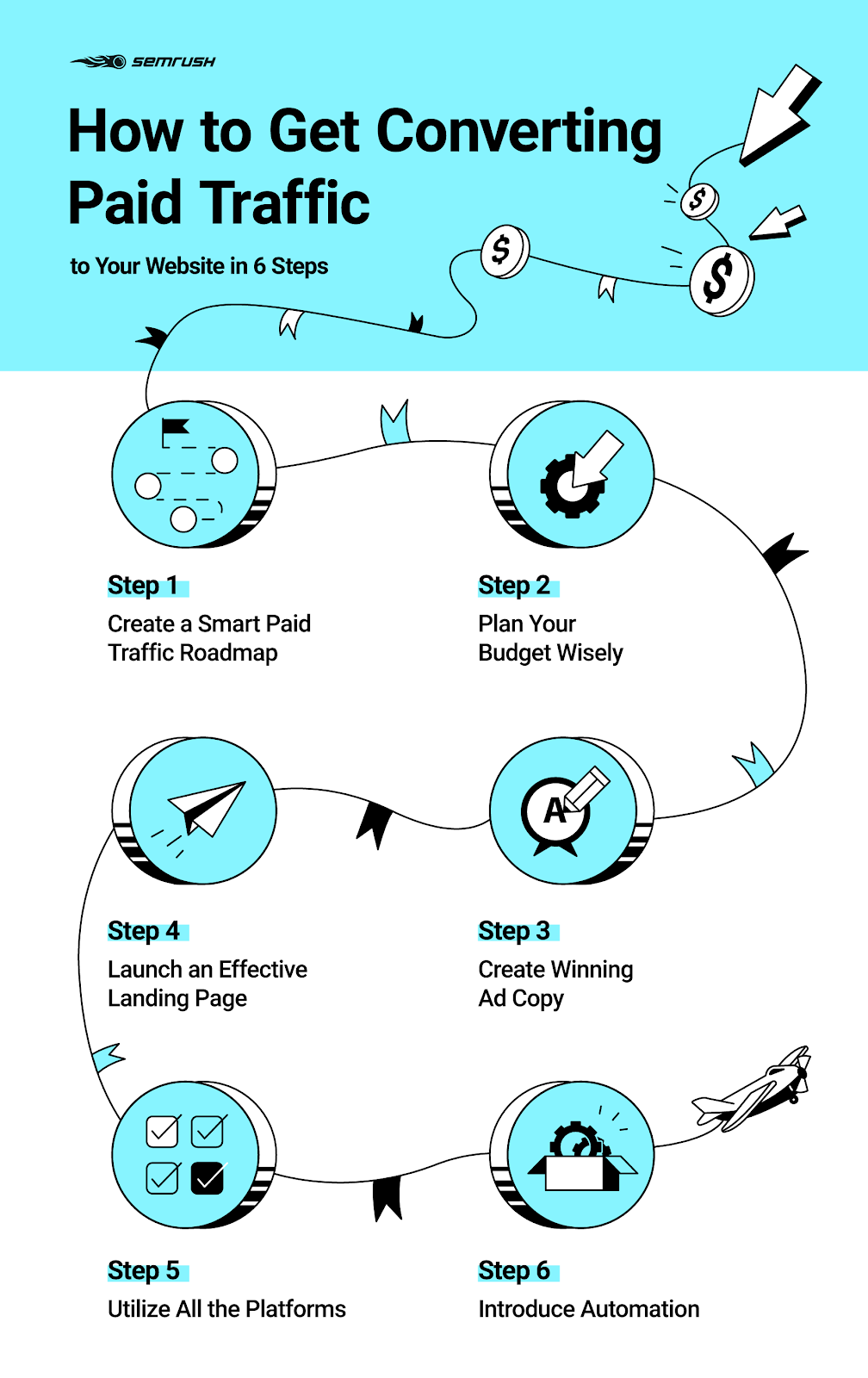
Step 1: Create a Smart Paid Traffic Roadmap
People who say that PPC doesn’t work might have tried to run their ad campaigns without planning them first. To avoid common pitfalls like little or no impressions, huge overspend, and low click-through rate (CTR), you should start by creating a detailed roadmap based on reasonable KPIs, thorough audience research, a clear marketing message, and a list of eligible channels to disseminate it.
Step 2: Plan Your Budget Wisely
One of the biggest mistakes in launching a PPC campaign is failing to conduct proper research in preparation.
Depending on the industry, the CPC can vary significantly. For example, in electronics, a click can cost an average of just $0.74, which is almost nothing compared to the insurance industry, where the average price is $14.50.
Another problem is that failing to do your calculations — i.e. working out not only how much money you are going to spend, but what you are going to spend it on, and what you want in return — can result in an increased ad spend that only brings a few low-quality leads to your site.
Here are 3 main questions to answer to help you properly plan your budget:
Which keywords are you going to target? Depending on your goal (brand awareness or conversions), keywords may vary greatly in terms of price and competition. Start with the Keyword Magic Tool, which offers plenty of data about keywords and their potential, to find your targets.
Which locations will you cover? CPC can change significantly between states and regions. Start by checking your industry using the CPC Map, and see which locations might be the best fits for your advertising, as well as which you need to exclude to make savings in your budget.
What is your main KPI? Keywords that create brand awareness don’t necessarily drive conversions, as your audience is far less likely to be ready to buy. They are more curious than anything, so set only one KPI for each campaign.
Step 3: Create Winning Ad Copy
Have you ever felt like you have been misled about a product or a piece of content after clicking on an ad? Your audience won’t forgive you if you do this to them. Make a fair promise and deliver on it, and you’ll be more likely to encourage the actions you want.
Any compelling ad copy is made up of a targeted headline and a triggering description. The first tells your prospects what is in it for them, and the second explains how they can get it there and then.
Let’s look at the ads displayed for a ‘sell posters online’ query:
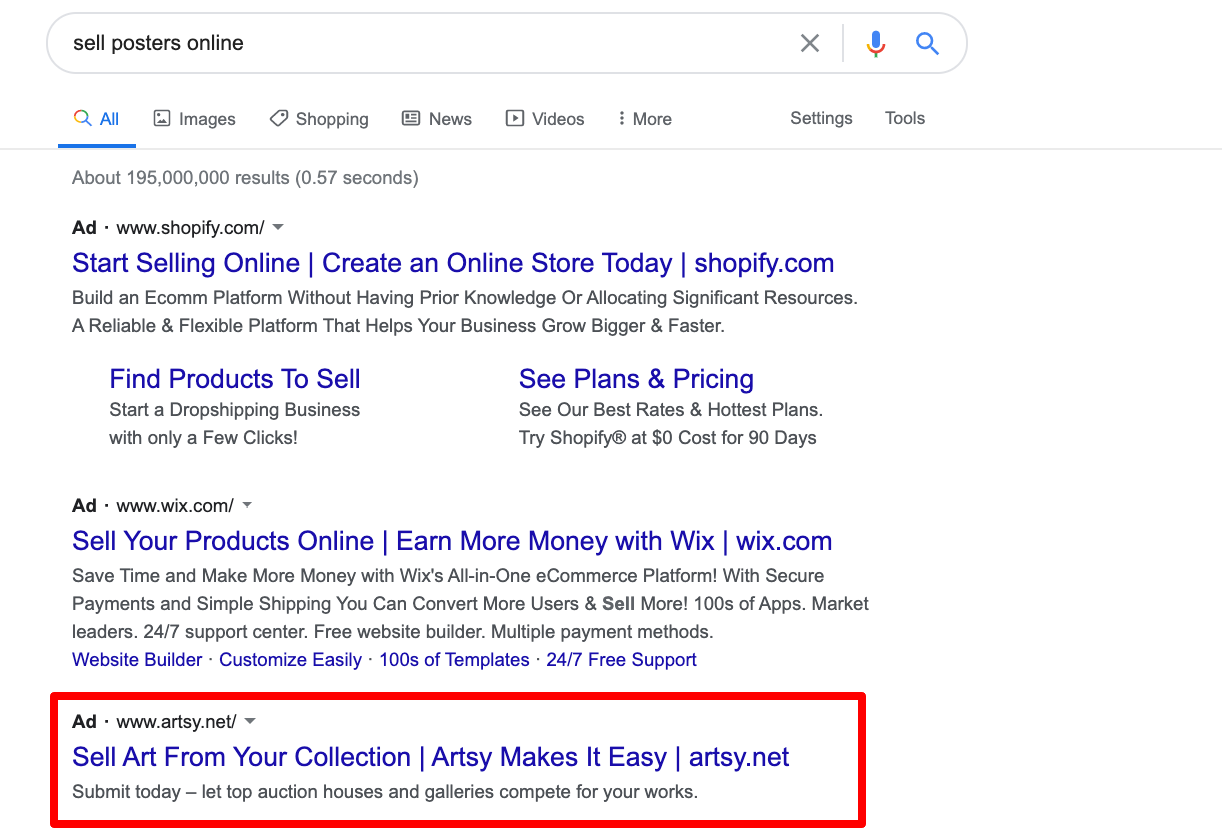
The first two ads are poorly targeted, as very few of those who sell collectibles or crafted posters will consider opening online shops. The third, on the contrary, is absolutely clear, and is ideal for artists and collectors.
How do you create targeted ad copy to attract relevant traffic?
Start with your target audience in mind. Think about what they need and how your solution can help;
Look at your competitors and try to understand their targeting and how to outperform them; and
Generate enough material for A/B testing: Write at least 3 unique headlines and 2 descriptions to develop an understanding of user preferences.
Step 4: Launch an Effective Landing Page
Now, imagine yourself clicking on your ad. Is your landing page worth exploring? Does it deliver on the promise you made?
Take a look at Fovitec’s landing page. It is supposed to be selling photography lighting kits, but it looks more like a warning sign, or an eviction notice:
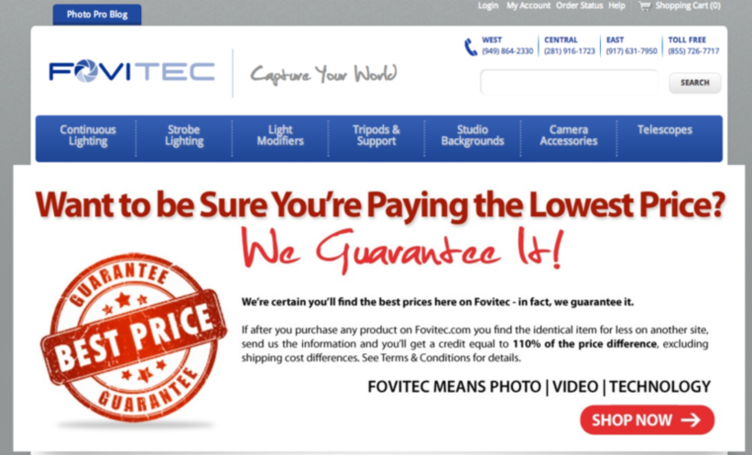
To avoid wasting your precious paid clicks, check your landing page bounce rate, time on page, heat map, and form abandonment rate; this is one way to know exactly how appealing it is to visitors.
If they leave immediately after landing, the page probably doesn’t align with the keywords it’s displayed for, and you’re talking to the wrong people. If they stay for a while but never click the call-to-action (CTA), your offer doesn’t excite them — we could go on.
If you don’t have a landing page for your ads but you plan to create one, use these three pillars: relevance, attractiveness, and drive. This will mean that it is relevant to the user query, the content and visuals are created with your buyer persona in mind, and the title and the CTA emotionally resonate with your audience so much that they convert. Here are a few tips:
Title: Check the searches related to your seed keyword to collect more creative ideas;
Content: Make sure the data your prospects are looking for are on your page and easy to find and understand. Don’t clutter the page with too many deals and offers;
Visuals: Use good quality, enticing images, not the free stock pictures everyone has seen a thousand times before; and
CTA: Match it with the search intent. For example, people looking for tours tend to visit dozens of websites and accumulate a lot of information before making the final choice. So, “Get free quotes” will work better than “Buy a tour now”, as they’ll get an email and use it to remind themselves about your great offers when they might be more inclined to purchase.
Step 5: Utilize All the Platforms
According to this Smart Insights study, Google controls 67.78% of the search engine market, which makes Google Ads highly competitive. This means that the CPC there can be so high that your return on investment (ROI) will be minimized. Besides that, Google is probably not the only place your target audience visits. For example, the professional-focused platform LinkedIn might be one of the best places for business-related ads if you are a B2B company.
Reaching out to people across all the platforms they use, not just Google and Facebook, is a great way to make the most of your ads by placing them in front of potential customers more frequently (within reason).
When it comes to brand safety and technical issues, utilizing several platforms also reduces your risk because you will still be visible on others even if one fails or goes down.
Step 6: Introduce Automation
By this point, you might be wondering exactly how much money you need to budget to keep getting results, or which channels will be the most effective in your long-term paid strategy. What will the optimum bid become for each channel? What should you do if you have never created ads before? What if you followed all the steps and still don’t have any leads or conversions? Answering these questions requires a lot of research, or, alternatively, a bit of AI help.
PPC automation technology uses AI and machine learning to boost your paid traffic wherever possible, from selecting the channels to reporting on results. However, some tools only automate bids, whilst others only optimize ads, and you’ll need at least one more to match your ads to likely prospects.
It is possible to fully automate the traffic acquisition and lead generation processes, though, by way of Traffic Jet. This tool creates, manages, and optimizes paid campaigns across various platforms based on your goals, budget, targeting, and competitor analysis.
It’s important to note that Traffic Jet can’t do your strategic planning and landing page creation for you; it’s designed to be employed as part of your own comprehensive plan according to the steps outlined above, so you can continue to optimize performance with the help of insights from AI.
Here’s how Traffic Jet can help you:
Budgeting
There is a simple PPC calculator that analyzes your objective, area of interest, average CPC in your industry, and KPI, and estimates the ad spend in one click.
Ad Copy
Traffic Jet can build your ads based on your ad copy and the creatives you upload, or extract the images, text, metadata, and keywords from your landing page, and use them to create thousands of ad combinations for testing.
Platforms and Optimization
Traffic Jet will analyze hundreds of paid traffic sources, including Google Search & Display, Microsoft Advertising, Facebook, Amazon, Instagram, Quora, and Reddit, to find the most relevant platforms based on your goals (awareness or lead generation). The algorithm monitors the effectiveness of each platform, and optimizes your campaigns accordingly.
Monitoring and Reporting
The tool checks how much traffic each ad sends to your website, verifies its quality, experiments with channels and creatives, and delivers the results to your Google Analytics and internal Traffic Jet dashboard, so you can monitor and analyze performance.
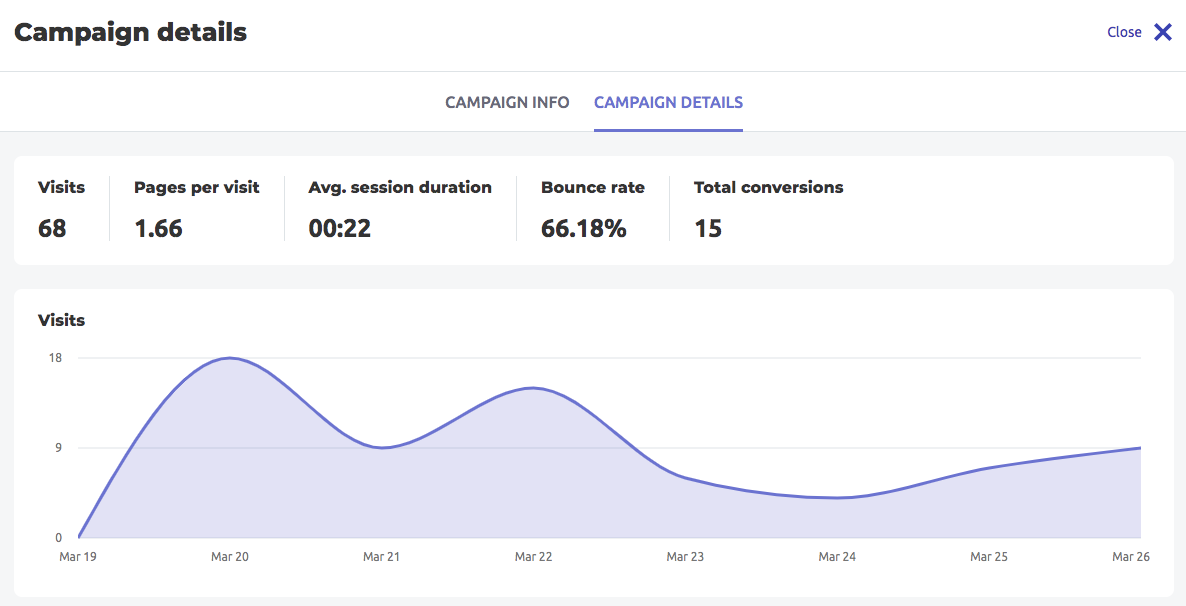
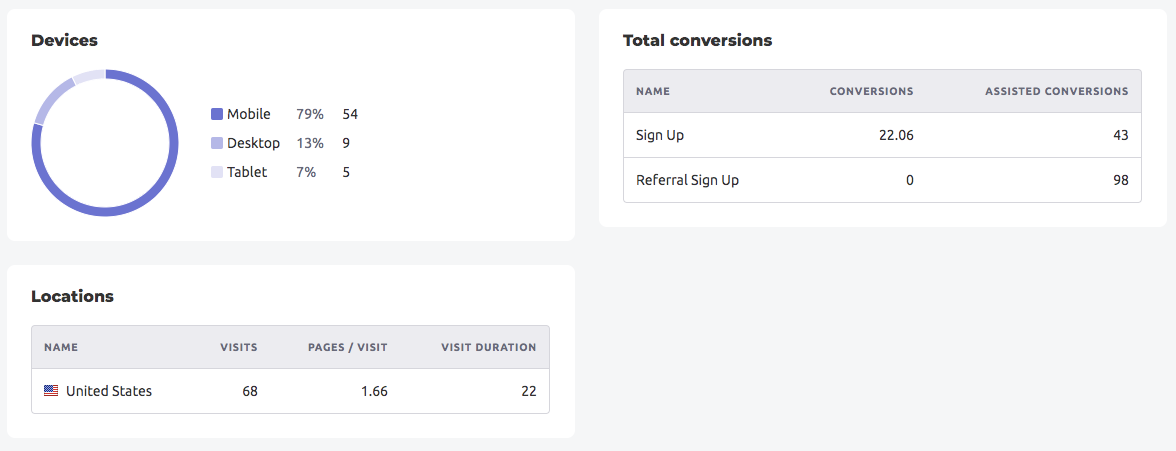
Building a Paid Traffic Strategy for Your Business
As you can see, a paid traffic strategy can be effective if you are concerned with not simply increasing the number of visits to your site, but attracting the kinds of visitors who are interested in buying your products and services.
If you follow the steps listed above (develop a roadmap, plan your budget, create winning ad copy, launch an effective landing page, and leverage multiple platforms), and combine that with PPC automation technology, you will stand a better chance of converting this traffic into leads and sales.
Using tools like Traffic Jet will help you refine the plan, get quicker results with the power of AI, and free up some time for you to focus on other more demanding aspects of your advertising strategy.
Innovative SEO services
SEO is a patience game; no secret there. We`ll work with you to develop a Search strategy focused on producing increased traffic rankings in as early as 3-months.
A proven Allinclusive. SEO services for measuring, executing, and optimizing for Search Engine success. We say what we do and do what we say.
Our company as Semrush Agency Partner has designed a search engine optimization service that is both ethical and result-driven. We use the latest tools, strategies, and trends to help you move up in the search engines for the right keywords to get noticed by the right audience.
Today, you can schedule a Discovery call with us about your company needs.
Source:





